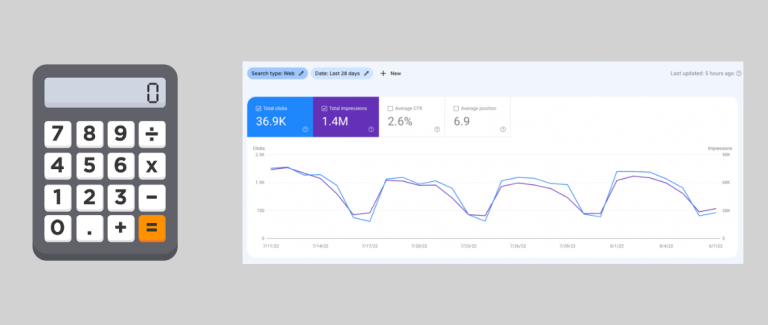In March 2020, during the pandemic, I created two websites that are currently getting around 40,000 users per month through search engines. These projects were launched in a couple of hours, despite having thousands of pages.

They indeed leverage what is called programmatic SEO, a smart way to scale your traffic. In this article, I’ll explain what you need to know about this concept that, even if you’re not familiar with the name, you already know.
What is programmatic SEO?
Programmatic SEO allows you to generate many pages using first or third-part data to generate the content. The definition is pretty straightforward. Let’s see one example with the project I created. If you’re curious, the URL is https://comoescribir.net/.
The website, in Spanish, helps you know how to correctly write numbers from 0 to 50,000. As you may have guessed, even if I managed to generate some traffic, this is not a project I could live from (I’m actually making around €50/month with it), so feel free to copy it if you like. The main template, used by 50,000 URL, leverages python libraries to provide the spelling for main numbers in several languages.

One myth I often read, and I’d like to debunk straight away: programmatic SEO is not only designed for ranking on long-tail keywords. Big websites like Amazon, Skyscanner or Booking, to name just a few, rely extensively on programmatic SEO to build their architecture and generate traffic at scale. And let me tell you that these websites are not going after long-tail keywords 😉
How can I leverage programmatic SEO?
Now that we’ve agreed on what programmatic SEO is, how can you use this information for your project? The theory is actually simple, but let’s use a real example Let’s assume that we are working for a train company in the UK and let me guide through the process.
Find the head term
Our objective is obviously to rank on keywords searches by users looking for a train ticket between two cities. You don’t have to be a genius to deduce that the main keyword will be “train london manchester” where London and Manchester can be replaced by any city. Even if you have variations for the same intent, it seems that this keyword is the most searched one. And very likely to convert well.

Map the demand
We have the search volume for one option, but we obviously want to map the full demand. In our example, it means:
- Getting our hand on a complete list of UK cities. With more than 2,600 cities, we could use this database for instance. Depending on the information you are looking for, you may have to build the database yourself, though. Not everything can be scraped.
- Build the keywords: with 2,600 cities in our database, we’d end up with more than 6M keywords. You don’t always have to handle that level of data, but be prepared to be surprise sometimes.
- Extract the volume: getting the search volume for more than 6M keyword is obviously not something you want to do manually. You can do it quickly and in a cost-efficient way using https://dataforseo.com/. If I have more than 1,000 keywords, that’s the API I always end up using.
At this stage, you’ll have a clear view of the demand and the 6M potential routes may be reduced to a couple of dozen of thousands. You may narrow down the list more by using first-party data like sales, obviously.
Create a template
If we look at a competitor, Trainline, we can see that they have pages equivalent to what we want to build.

Mapping the demand is easy, but now we need to build the pages. This means adding data regarding:
- Prices
- Information about the journey
- Information about the cities
- Tricks to find cheap tickets
- etc….
It can get complex pretty fast, and you have to remind that the goal is to scale page creation; therefore you must avoid, as much as you can, manual content creation. Because it would be a nightmare to update and/or translate into another language. But even without manual content creation, these projects can get complex quick and involve several teams (SEO, Data, Back-end and Front-end).
Think about the internal linking
Creating these pages you want to rank is not enough. In our example, we may end up with thousands of URLs, how are we going to feed them to Google? You have to find a relevant way to do so.
- Usually, the solution is to create an additional level in your architecture, not aimed at generating traffic but crucial for the internal linking
- You can also leverage main navigation and links between pages
For the project I mentioned at the beginning of the article, the internal linking mainly depends on links between pages, which are built using a ghostblock-like strategy.

Conclusion
Programmatic SEO is, in my opinion, one fancy term to explain what has been used for decades by companies to create & rank pages at scale. Amazon or Walmart, to name just a few, are using this approach. Because it is necessary if you work on a project targeting a very heterogeneous demand.
The only question is: is it relevant for your project, and do you have the necessary data to achieve this approach?
